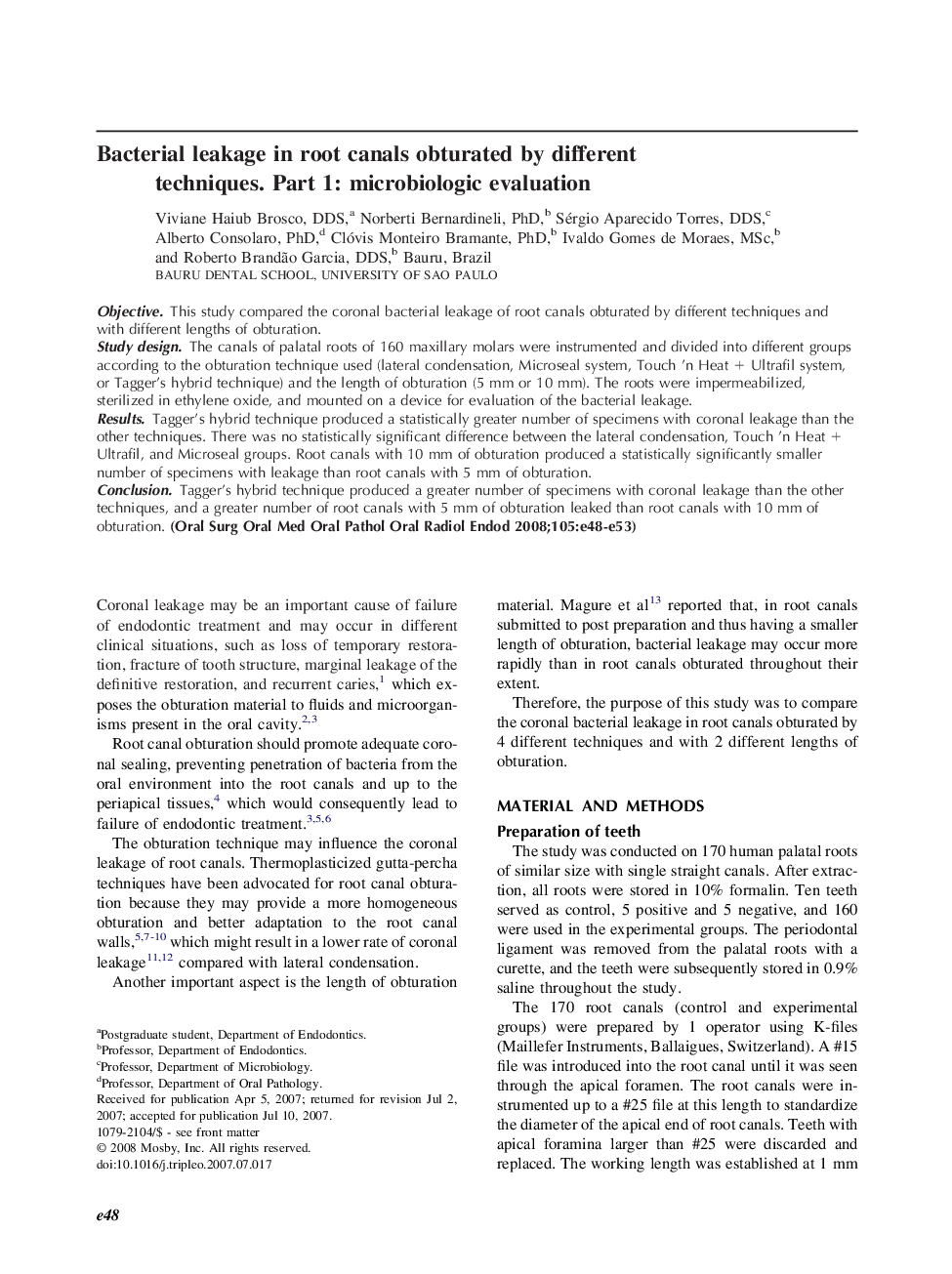| Article ID | Journal | Published Year | Pages | File Type |
|---|---|---|---|---|
| 3168999 | Oral Surgery, Oral Medicine, Oral Pathology, Oral Radiology, and Endodontology | 2008 | 6 Pages |
ObjectiveThis study compared the coronal bacterial leakage of root canals obturated by different techniques and with different lengths of obturation.Study designThe canals of palatal roots of 160 maxillary molars were instrumented and divided into different groups according to the obturation technique used (lateral condensation, Microseal system, Touch ’n Heat + Ultrafil system, or Tagger’s hybrid technique) and the length of obturation (5 mm or 10 mm). The roots were impermeabilized, sterilized in ethylene oxide, and mounted on a device for evaluation of the bacterial leakage.ResultsTagger’s hybrid technique produced a statistically greater number of specimens with coronal leakage than the other techniques. There was no statistically significant difference between the lateral condensation, Touch ’n Heat + Ultrafil, and Microseal groups. Root canals with 10 mm of obturation produced a statistically significantly smaller number of specimens with leakage than root canals with 5 mm of obturation.ConclusionTagger’s hybrid technique produced a greater number of specimens with coronal leakage than the other techniques, and a greater number of root canals with 5 mm of obturation leaked than root canals with 10 mm of obturation.
